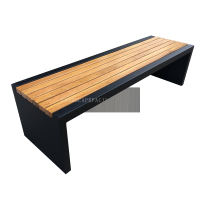Welcome to the website for landscape facilities products and knowledge.
What are the most important factors for ensuring the table’s adaptability to future workplace norms?
The modern workplace is undergoing a radical transformation, demanding furniture that can keep pace with evolving norms and workstyles. Ensuring a table's adaptability to future workplace requirements involves several critical factors that extend beyond mere aesthetics.
First, modularity stands as a fundamental principle. Tables with reconfigurable components, interchangeable parts, and scalable designs can accommodate various team sizes and collaboration styles. This flexibility allows organizations to repurpose spaces quickly without significant investments in new furniture, making the table a long-term asset rather than a temporary solution.
Second, integrated technology support is no longer optional. Future-ready tables must incorporate built-in power outlets, USB charging ports, wireless charging capabilities, and cable management systems. As workplaces become increasingly digital, the ability to seamlessly connect and power devices directly from the workspace surface becomes essential for productivity and user convenience.
Third, ergonomic design principles must evolve to address both physical and cognitive wellbeing. Height-adjustable mechanisms that support sitting, standing, and perching positions cater to diverse user preferences and health requirements. Additionally, considerations for acoustic management, visual privacy, and psychological comfort through curved edges, organic shapes, and biophilic elements contribute to overall workplace satisfaction.
Fourth, material selection and sustainability credentials significantly impact longevity. Durable, easy-to-clean surfaces that resist wear while maintaining their aesthetic appeal ensure the table remains functional through multiple workplace transitions. Environmentally conscious materials and manufacturing processes also future-proof the investment against increasingly stringent sustainability regulations.
Finally, the table must support hybrid work models by facilitating both in-person and remote collaboration. This includes designs that integrate well with video conferencing equipment, provide optimal sightlines for camera angles, and create inclusive environments where remote participants feel equally engaged in discussions happening around the table.
The most successful table designs will balance these factors holistically, creating surfaces that don't just serve immediate needs but actively enhance how people work together regardless of where they're located or what technologies emerge in the coming years.
Related search:

Recommendation
Modern Stainless Steel Begonia Wood Park Chair Outdoor Courtyard Leisure Sun Protection Bench Long Seat